Farm & Ranch
[AgriLife Today] Drones help researchers monitor dryland wheat
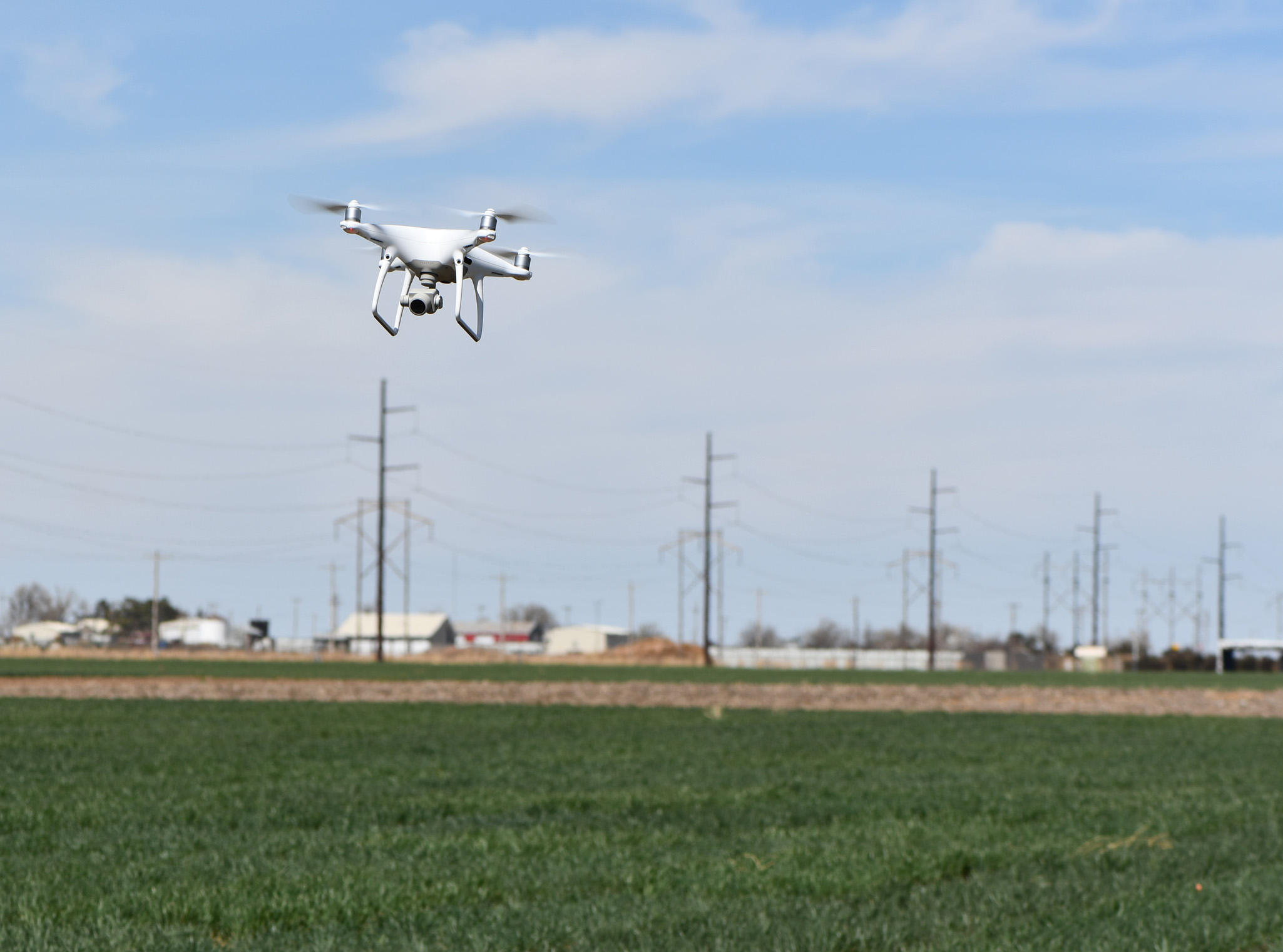
By: Kay Ledbetter
Panhandle’s moisture-deficient winter offers prime drought-tolerance measurements
Writer: Kay Ledbetter, 806-677-5608, [email protected]
Contact: Dr. Jackie Rudd, 806-677-5600, [email protected]
AMARILLO – The Texas A&M AgriLife Research dryland wheat variety nursery near Bushland is being monitored weekly by drone flights, offering wheat breeders a chance to see changes on a more real-time basis.
Dr. Jackie Rudd, AgriLife Research wheat breeder in Amarillo, said the dryland wheat variety nursery typically has varieties yielding an average of 30 bushels per acre, but some years that can fall to 8-10 bushels per acre due to drought and other environmental conditions.
“This year is undetermined,” Rudd said. “But it looks like it is out of moisture to survive on.”
He said the dryland nursery was planted Oct. 11 into good moisture and it came up and really looked good, but the rain shut off and “we haven’t had rain since then.”
The dryland variety nursery is mirrored across the state with locations in the Rolling Plains, South Plains and further south, all evaluating a large number of different genetic sets to determine how they will do throughout the Great Plains.
“We take advantage of what environments we have,” he said. “It’s been very dry this year, matching close to 2011 when we yielded 8-12 bushels per acre. Some varieties, however, yielded 18 bushels per acre that year. That’s what we are looking at, comparing the genetics here and throughout the state under multiple locations and different conditions.”
https://www.youtube.com/watch?v=b7W6JaUEVRw&feature=youtu.be
Rudd said they have been monitoring the situation to see the difference in color and growth rate, which has varied with how they started in the fall. Varieties with a good root system had a good stand establishment, got their root down and survived through the winter quite well.
“They are surviving entirely on subsoil moisture at this time,” he said. “But the more we dig down and check, there’s not much moisture under it at all. A week of this hot, windy weather, and it won’t be a pretty sight.”
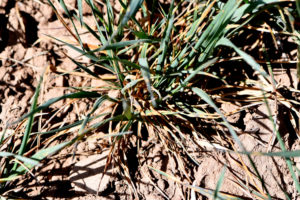
Dryland wheat is suffering from no moisture since it has been planted. (Texas A&M AgriLife photo by Kay Ledbetter)
He said some don’t have much of a root system left. Some might have had roots earlier but those have almost disappeared due to the dry weather.
“Jointing and stem elongation started last week, and things were looking pretty good,” Rudd said. “But when I was walking the field taking notes last week, I kicked some plants and they literally fell over.
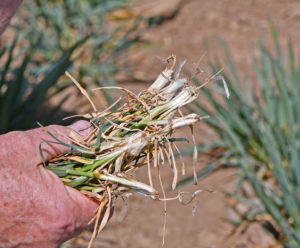
The roots of dryland wheat in the Texas A&M AgriLife Research variety plots dried up. (Texas A&M AgriLife photo by Kay Ledbetter)
“Many plants are not rooted at the crown. There may be some variety differences, but it seems to be uniform across the dryland nursery and several nearby dryland wheat fields. My first thought was an insect or a pathogen, but I really think that it is just dry.
“I’ve never seen anything quite like this – a decent looking plant with almost no crown roots,” Rudd said. “An observation by our crop physiologist, Dr. Qingwu Xue, is that the plant is surviving on the seedling roots and it was just too dry to form crown roots.
“The seedling roots can get the wheat seedling off to a good start and continue to grow down to deep soil for water uptake. However, a root system without crown roots is very difficult to sustain a large developing above-ground plant.”
Some varieties, however, appear to be doing better than others, Rudd said.
“We need to evaluate these 5,000 plots one at a time,” he said. “Our normal process is to walk around here and go plot by plot and write in the book what we are getting. This year we’ve had 16 flights over the plots using UAVs.”
He said they are using the flights to visually measure how fast the stand established in the fall, how well it did when the cold temperatures hit – some lost a lot of leaf area while others kept right on growing — and the spring green-up.
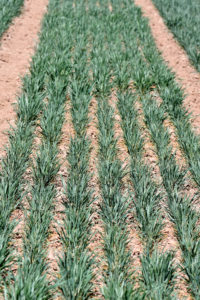
Drones help researchers monitor leaf color and growth rate between varieties. (Texas A&M AgriLife photo by Kay Ledbetter)
“Some varieties started greening two weeks ago and some started last week and some are really just now starting to green up,” Rudd said.
“With drones flying over weekly, we can actually plot that through the year, the biomass or the leaf area collection, and measure the color differences with the camera and also spectral reflectance and what the greenness pattern really is,” he said. “We are measuring by ground and by air, and that’s very important information we can get in a short amount of time by drone.”
To walk this dryland field, it would take three to four hours of walking and writing notes in the notebook, Rudd said. With the drone, it takes 10-15 minutes.
“It’s a big change from having to walk the field, although we are still doing that now to ground-truth and make sure everything the drones are recording is correct,” he said. “But I’m gaining more confidence in the drone information, and I think it’s going to give us efficiency and a lot more data to make our selections. We can see plant development through the year and adjust what groups of material we are going to focus on at harvest.”
Rudd said the same breeding lines growing in the dryland nursery are also in the irrigated nursery, which is on track for yields over 100 bushels per acre.
“Comparing yields and drone data from the dryland plots with those collected from irrigated plots will provide an outstanding look at drought resistance,” he said. “Once harvest comes, we will know for sure how valuable the data we have been collecting really is, and most importantly this year, to visualize drought tolerance in each individual breeding line and variety.”
-30-
Find more stories, photos, videos and audio at http://today.agrilife.org
Farm & Ranch
Land Market Report: March Land Sales
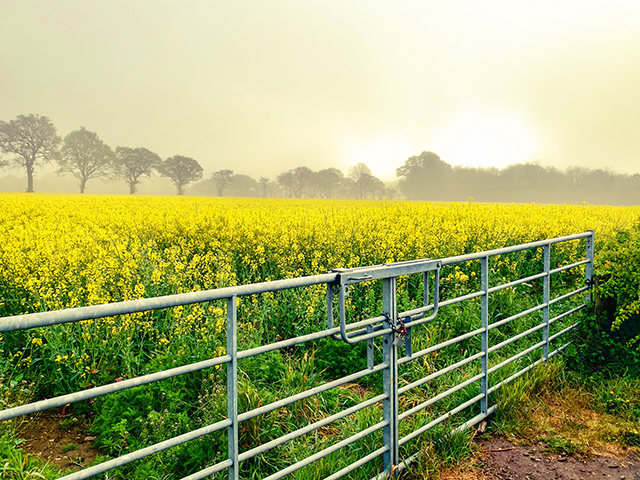
By Jared Groce
Rural land sales are continuing on a steady pace for early spring, with prices holding very strong with the sell-to-list price ratios remaining very high, even on properties that have been on the market for a longer than usual time period. The total number of transactions are picking up once again as the spring selling season kicks off, and the average acreage continues to decrease.
Larger acreage properties seem to be in higher demand than smaller properties currently, with many buyers simply parking cash in real estate to hedge against inflation. Interest rates seem to have settled down and most experts agree that rates will be reduced by the fed this year. Some lenders have programs in place that allow the buyer to reduce their rates without having to go through a full refinance ordeal.
To read more, pick up a copy of the May issue of NTFR magazine. To subscribe by mail, call 940-872-5922.
Farm & Ranch
Texas FFA State Vice President Weston Parr

Future Farmers of America was founded by a group of farmers in 1928 with the mission of preparing the next generation of agriculture. It has done just that during its 95-year history, as the organization works to give back to others by following its motto, “learning to do, doing to learn, earning to live, living to serve.”
FFA is an organization made up of state associations, and at the helm of the Texas FFA is a team of 12 officers representing their respective areas within the Lone Star State. These individuals dedicate a year of their lives as they serve members, provide leadership, and work together with the state staff and board of directors to develop policy and lead the organization of over 177,000 members.
North Texas is represented by Area IV and Area IV, stretching from Wilbarger County to Bell County and from Runnels County to Grayson County. This year, those chosen to lead this great area are State President Isaac Hawkins Jr., Area IV, and State Vice President Weston Parr, Area V.
Parr is from the Sam Rayburn FFA chapter and the Area V Association, but the leader who now serves more than 19,100 members of Area V entered the FFA organization as a shy teenager who sat in the back of the room.
“I didn’t talk to a whole lot of people. I didn’t know what I wanted to do with my life or where I could see myself, so I wasn’t involved on my high school campus,” Parr recalled.
“Then I started FFA and slowly but surely, my ag teachers worked me into attending more contests, meeting new people, and speaking. I remember the first time I gave an officer speech to my chapter. I can still remember how embarrassing it was. To see the progression from that moment to speaking on stage at the state convention in front of thousands of people. Now I feel like I can enter the industry I want and be successful all because of what FFA afforded me for five years.”
There is not much Parr did not do during his time in high school. His contest participation included chapter conducting, wool judging, cotton judging, wildlife, and job interview, but his favorite was extemporaneous speaking, which he did not start until his senior year of high school.
“I wish I could go back to my freshman, sophomore, and junior years and start that sooner. I think if I had more time, I would have been more successful than I already was, but that was something I didn’t realize I liked at the time. I’m not naturally somebody who likes to speak in public, but it was actually my favorite,” Parr said.
Parr won several awards during his time competing. In 2023 alone, Parr earned the Texas FFA Service-Learning Proficiency title, was a National FFA Service-Learning Proficiency finalist, and a Texas FFA Extemporaneous Speaking finalist. In addition to his CDE and LDE events during high school, he showed commercial steers at Houston, and boilers at most major shows, participated in the county show with projects in ag mechanics, showed goats from time to time, and showed heifers until graduation.
“FFA provides invaluable resources and knowledge to be successful once you leave high school and you are out of the blue jacket for the first time. I have been a part of a lot of great organizations over the years, and they are all great in their own way, but in my opinion, FFA is the most successful at producing members of society who want to go and do something with themselves,” Parr said.
He was halfway through his time as Area V Association President and attending the national convention when he began to ponder the idea of running for state office.
“This is around the time when you usually figure out if you want to go through and be a state officer or you decide that area officer is your last run. I was unsure of where I wanted to go, but I knew I didn’t want to be done with FFA. I decided maybe it would be a good opportunity not only for me to make more friendships and connections, but also to give back to the program that allowed me to be able to do what I can do today,” Parr explained.
To read more, pick up a copy of the May issue of NTFR magazine. To subscribe by mail, call 940-872-5922.
Farm & Ranch
Texas FFA State President Isaac Hawkins, Jr.

FFA is an organization made up of state associations, and at the helm of the Texas FFA is a team of 12 officers representing their respective areas within the Lone Star State. These individuals dedicate a year of their lives as they serve members, provide leadership, and work together with the state staff and board of directors to develop policy and lead the organization of over 177,000 members.
North Texas is represented by Area IV and Area IV, stretching from Wilbarger County to Bell County and from Runnels County to Grayson County. This year, those chosen to lead this great area are State President Isaac Hawkins Jr., Area IV, and State Vice President Weston Parr, Area V.
These young leaders share a drive to give back to the organization that has given to them as they work to support FFA members while preparing for a future in the agricultural industry.
From the 12 selected representatives, delegates elect a president and first vice president, with the remaining 10 serving as vice presidents from their respective area associations. The selection process consists of a popular vote by delegates at the state convention, which accounts for 40 percent of the decision, and a committee process that includes a written knowledge exam, worth 10 percent, and an interview, accounting for 50 percent. This year, after all was said and done, Hawkins was named this year’s Texas FFA President.
Hawkins grew up as part of a large, blended family with five sisters and three brothers. While he says he did not grow up in agriculture, his youth was spent outside fishing and doing all things outdoors with his father, whom he calls his best friend. As he entered Hirschi High School in Wichita Falls, Hawkins knew he wanted to be a vet but was unsure of what courses to take to set himself on that path.
“I signed up for ag principals just because they had animals in the description. The first day of class we talked about churning butter, and I went to my school counselor that same day and told her to change my schedule immediately, but she refused. She made me stay there,” Hawkins laughed. “Luckily, I had an incredible ag teacher, and she really helped me to fall in love with the program.”
To read more, pick up a copy of the May issue of NTFR magazine. To subscribe by mail, call 940-872-5922.
-

 Country Lifestyles1 year ago
Country Lifestyles1 year agoScott & Stacey Schumacher: A Growth Mindset
-

 Equine7 months ago
Equine7 months agoThe Will to Win
-

 Country Lifestyles7 years ago
Country Lifestyles7 years agoStyle Your Profile – What your style cowboy hat says about you and new trends in 2017
-

 Country Lifestyles4 years ago
Country Lifestyles4 years agoAmber Crawford, Breakaway Roper
-

 HOME7 years ago
HOME7 years agoGrazing North Texas – Wilman Lovegrass
-

 Country Lifestyles7 years ago
Country Lifestyles7 years agoDecember 2016 Profile, Rusty Riddle – The Riddle Way
-

 Outdoor9 years ago
Outdoor9 years agoButtercup or Primrose?
-

 Country Lifestyles8 years ago
Country Lifestyles8 years agoJune 2016 Profile – The man behind the mic: Bob Tallman






